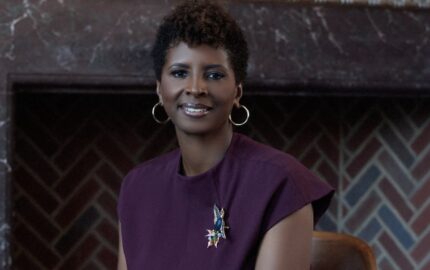The risks of tackle football run through the center of a tortured conversation that escalates with each new tale of the shattered life of a famous pro. More and more NFL families are stepping up with testimony about the consequences of concussions: depression, impulsive anger, extreme mood swings, memory loss and Alzheimer's disease.
Now, on the eve of the 2018 season, comes a distinctive story from Greg Bishop of Sports Illustrated that confronts the essential question facing parents – and American sports culture – about the dangers of a time-honored pastime. "The Search for Why" begins almost routinely as a missive on loss:
Cards and collages line the entryway to the Hilinski family’s home in Irvine, Calif., everything signed with My deepest condolences and promises of prayers.
But little is routine in an account that follows one family’s search for answers that might never come as it winds through the big-picture issues surrounding the degenerative brain disease known as chronic traumatic encephalopathy (CTE).
Bishop uses sensitive reporting and a thoughtful chronology to weave a tapestry that wraps readers in the internal conflict plaguing those close to Tyler, and especially his parents, Mark and Kym Hilinski. We meet them in their living room a few months after the death of their middle son Tyler, who was 21 when he took his own life this past January. The junior, a backup quarterback at Washington State University, had hidden his depression from family members and teammates, whose lack of awareness only compounded their grief.
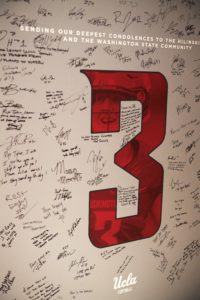
Researchers at the Mayo Clinic found that Hilinski had stage 1 (the lowest stage) CTE, a revelation that seemingly would add to the growing indictment against football. But in a powerful moment in the story arc, we learn that Hilinski’s younger brother, Ryan, is headed to college to continue the family football legacy despite his brother’s death.
The SI package includes a 24-minute documentary for subscribers, as well as a discussion with Bishop about the project. He credits the family’s cooperation for sharing a story he hopes will foster conversations about depression and suicide as much as it does about the dangers of football.
Storyboard asked Bishop to expand on how he secured and crafted the intimate story of a grieving family. His answers have been edited for clarity and length.
With increasing attention on the ravages of CTE, individual stories can start to sound familiar and lose their journalistic impact. What made you decide Tyler Hilinski’s story was worth pursuing as a long-form piece?
I worked at The New York Times in 2008, when it seemed like Alan Schwarz was writing one CTE story a week. I never envisioned writing one myself – for another publication – a full decade later. But that’s football and where we are with it.
The CTE piece of Hilinski’s story was more of a pivot – a central element for sure, but not the reason I reached out to the family initially. It didn’t seem that likely that a backup quarterback who played the most protected position in sports would have a degenerative brain disease. I spent more than a month talking to Mark Hilinski (Tyler’s father) before he revealed that Tyler had CTE.
I was more interested in the timeless themes – a family’s grief, an unexplainable tragedy. And I saw the piece as a more visceral way for us to write about mental health and this moment of time where athletes are openly discussing depression and anxiety and all the things that Tyler might have been feeling and hiding from his family.
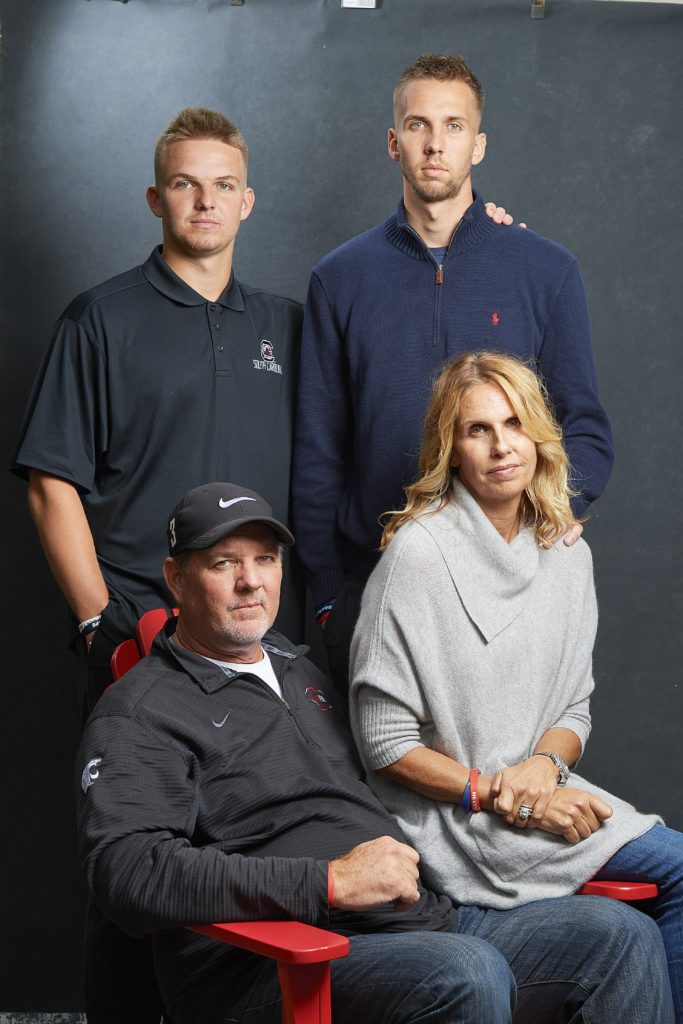
Even as I continued the reporting, I felt strongly that I didn’t want this to be just a football-killed-Tyler story. CTE had a prominent place in the narrative but I wanted to keep it where it belonged, rather than making the whole top of the piece about CTE, which I think would have been sensational and felt familiar to the readers. So that’s how it came to be that we flash the notion of CTE up high but don’t really get into it until about halfway through the story. That was intentional.
Take us through the process of securing the family’s cooperation. Also, you tell readers that the family asked you not to share the contents of the letter Tyler left behind. How did that shape the writing?
At first, I pitched Mark on a story about the family’s grief. We exchanged a few emails and they started to get deeper in tone, and then deeper, and then deeper still. I even told him something I’d never talked about outside of my immediate family – that my uncle, my dad’s younger brother, had committed suicide when I was a child.
We exchanged emails and text messages for most of April, before settling on a visit in May. Some of them were just me checking in, seeing how he was doing, and Mark often was very honest about his feelings. “I’m empty” was something he tapped back to me one night.
We discussed the process of telling the story, potential timing for interviews and publication, whether to do video the same time we did the magazine reporting, whether to have a photographer there, etc.
“I’m empty” was something he tapped back to me one night.
~ Tyler Hilinski’s father in a text message to the reporter
I also agreed to send him story clips. One was a piece I did on Drew Bledsoe in retirement back in 2008 for the NYT. Mark called Bledsoe, who I later learned vouched for me. I tried to send Mark stories that showed I could handle the human element of narrative arc, whether it was about a quarterback who had died under mysterious circumstances in the woods in Michigan or Jay Williams’s life after the motorcycle incident that ended his basketball career. But the story Mark seemed to like the most was about Melanie Roach, an Olympic weightlifter who was juggling the challenges of raising an autistic son, her husband’s political ambitions and several back pain while still competing in her chosen sport. We talked about all the stories and how I put them together and my process.
For this piece, I did around 25 interviews; took two reporting trips, one to (the Hilinski home in) Irvine and another to (Washington State University in) Pullman. I collected what documents I could, from the CTE letter to the text messages that Kym (Tyler’s mother) sent Tyler before and after his death. And I remained in daily contact with the family. I exchanged text messages with the parents every day from the initial meeting in May until we published in late June.
They were completely honest and revealing. The only detail they asked me to keep out of the story was what Tyler wrote in the note he left behind. In initial versions of the draft, I had included the letter’s contents, along with a powerful quote from Mark.
After the second draft was done, I walked the Hilinskis through the basics of the story structure. That’s not a step I usually take, but since they had opened their lives to me and shared the worst moment they had lived through, I felt it was important that they were not surprised by anything in the piece, and that I had gotten the story right.
We discussed Tyler’s note – I worried that leaving it out would lead to more questions than answers – and ultimately they decided they didn’t want the contents published. They took a couple days to make that decision and informed me via text message. That’s the only thing they took off the table. (Storyboard note: Bishop addressed the suicide note in one paragraph that ended, “That note—the Hilinskis do not want to publicly reveal the contents—offered no explanation, no I love you, no goodbye.”)
How did the story structure develop? How much was reconstruction versus observation?
I collect everything in one file, then spend a day highlighting the material I might use and italicizing parts of transcripts that might make good quotes. In general, I don’t use many quotes, even in longer stories. Then I make a hand-drawn map of what might fit where. The map becomes the sections of the story, and I take the material from the main file and organize it into smaller files that represent the sections, then put those files back together, in the order I plan to write them, in an outline. Then I write off of that, changing things often, structure included. The file for the Hilinski piece was 145 pages, the outline about 75 pages or so.
I really wanted to put the reader into the family home as soon as possible. It struck me the moment we walked in, when it was impossible not to notice the volume of Tyler-related items they had collected. There were condolence montages and sympathy cards and this picture of him that was blown up and rested against the wall in the entryway, where fans were carrying him off the field. It was a striking image for a backup quarterback.
…it was impossible not to notice the volume of Tyler-related items they had collected.
~ Greg Bishop on the Hilinski home
Later, we learned that an unopened envelope on the kitchen table was from the coroner’s office and that they had no plans to open it. That’s when I knew I wanted to start the story in the kitchen/entryway/living room, to frame the piece around the parents’ search for answers and show how their mindset changed over time, as they came to realize that why Tyler killed himself mattered less than how they could maximize the meaning of his life. The kitchen best sets that up because everything there falls into one of two categories – his life and his death.
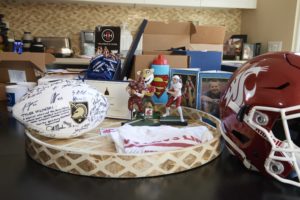
I had to do a fair amount of reconstruction for the piece. The last day of his life, for instance, is the second section, and it’s entirely reconstructed from more than 20 interviews. I could have written 4,000 words just on that day. The parts where his parents look back at his life in high school and in college and when they examine the immediate aftermath of his death – those were all reconstructed, too.
I didn’t use hardly any voices beyond the family, even though I had them – they were useful for details and making sure I had events correct. But I didn’t want the reader to be distracted by too many voices. I wanted the focus to remain on the family, its search and its grief.
We had several discussions during editing about whether to start the story on the day before Tyler died, when he learned how to use a gun. I even tried a draft that way. Ultimately, I argued against that strategy. For one, I thought it diminished the arc I wanted to set up – this search for why. For another, I felt like it changed the tone of the story, taking it away from the family.
We decided to keep the lede so it put readers into the living room while introducing the family, their relationship to football, the best moment of Tyler’s life and everything that’s in the room now, which speaks to his death. The family is literally trying to close the gap between the happy kid they see in those pictures and the envelope that lays out how he died, in all the brutal details.
Then the day he died became the second section, the day their search started, back when all they wondered was why Tyler had killed himself. That structure allows the family to evolve over the course of the story, which was important to me, especially when you’re asking readers to stick around for 5,000 words.
Well-told tales often are an overlay of multiple stories. You had the story of the family’s grief. You had the story of the suicide. You had the story of the youngest brother deciding to continue playing football. You had profound medical and societal issues at play. How did you weld all of these elements into a cohesive framework?
Once we decided that the family’s search for answers would be the overarching structure, everything else fell into place. So the sections show that search evolving, from the day their search started to them looking back for clues through high school and in college. Then it led to them redefining that search to make it more about Tyler’s life and why it mattered, to them getting an answer – or the best answer they had gotten – in the CTE diagnosis, to them deciding that didn’t matter as much as they thought it would, to them grappling with their youngest son and his upcoming college career. That’s the general arc of the story.
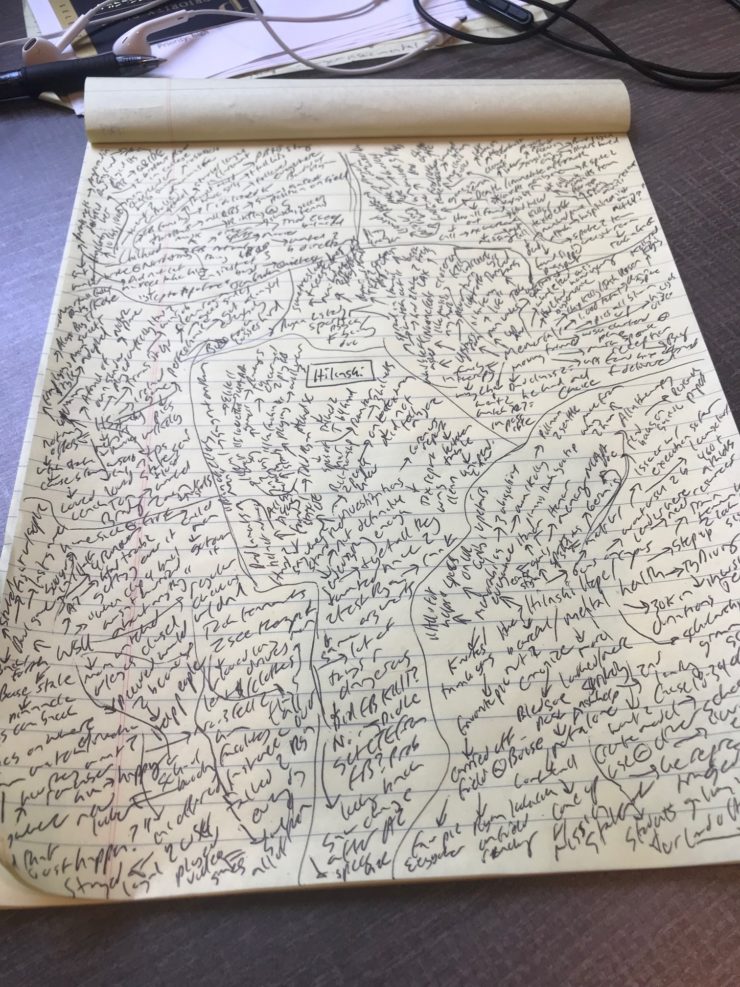
But I wanted the themes to come across as well and tried to thread them throughout. The family’s grief is an obvious one. I wanted to show how it wasn’t a straight line – how no matter how much work they did with the foundation they created or how many wristbands they handed out they still felt guilty, they were still grappling with what happened and their respective roles in it. I also wanted to explore their relationship with football and how that evolved, from watching Tyler collect enough tackles in Peewee leagues to earn the nickname Mini-Urlacher to the hit against Arizona last season that “rocked” him to the CTE diagnosis and how uncomfortable that made everyone as Ryan Hilinski prepared for his senior high school season.
I wanted everything about depression in the story to evolve as the family experienced it. Same for football and CTE. I didn’t want to force those larger themes into other places, to quote doctors on depression, or suicide rates. I wanted those large themes to play out as the Hilinskis saw them, debated them, grappled with them. That’s where the tension in the piece comes from.
You shared your outline with Storyboard. First, how important is it to create an outline before writing? Should journalists do this for almost every story, no matter how small? Second, take us through your roadmap, which at first glance looks like scribbling from ancient times. How does it help you get to the finished product that is among the best in sportswriting?
I’m almost embarrassed to admit this, but I outlined my first story when I was 28 years old and already at The New York Times. I wish I had started to refine my process earlier. I spent a lot of time in my first job, at The Seattle Times, staring at a blank page on my computer screen, trying to come up with something that resembled the stories I read in Sports Illustrated. When I look back at those stories I see little character development, almost no narrative arc and very little actual storytelling.
Outlining is the second-most important part of my writing process. The first is reporting. Long stories like this simply won’t work if you don’t have new material – and an abundance of it. But after that, I find that I write better – and more quickly – if I have the material organized. And not just in my brain but on paper and in the files.
… I make a hand-drawn map of what might fit where. The map becomes the sections of the story, and I take the material from the main file and organize it into smaller files that represent the sections, then put those files back together, in the order I plan to write them…
~ Greg Bishop on outlining
As I described above, I’ll do the main file, then the map, then the separating, then the outline, and once I’m organized, I can write a magazine story in a day. It’s easier to move around chunks of certain themes because they’re already separated. For example, if I had moved the day that Tyler died to the top, I could have taken all my material there and just slid it above the notes and quotes I had from the Hilinski kitchen. That makes it easier to rearrange things, to see how they fit together and to make structural changes more quickly than if I don’t know exactly what the arc is. It also helps when I get back my initial edits – I usually send a draft to four or five of my friends for feedback – and they offer suggestions on structure.
Those are the most important things to me: having enough reporting and being organized enough to be flexible so that I can find the “right” answer rather than just an answer.
At that point, the most important part is rewriting. I did three drafts of this story, plus edits, and it changed dramatically each time. The first draft was 8,000 words and had no arc at all. My friend Ben Baskin wrote something like “not going to lie – you have work to do” in his initial edit. But because it was organized those parts went more quickly. Then I did the internal edits, guided by the excellent and steady editor Albert Chen, where we worked on refining the third draft over the course of almost two weeks.
Helping Mary (Agnant) with the documentary changed my outlook on video.
~ Greg Bishop on working with a video producer
These days most reporters work with the digital presentation. You and the videographer, whom you’d never met, arrived at the family home together for the first interview. So now you are navigating a new working relationship while the parents pour their hearts out over the loss of their son. How did that go?
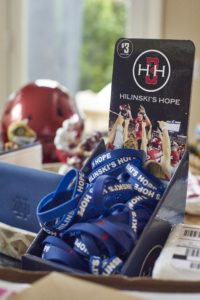
This was an unusual experience for me. I had spoken to the video producer, Mary Agnant, on the phone before we went to see the family in California. But we actually met while standing in front of the Hilinski home on that random Tuesday in May. I was super nervous. I have a young son at home and Mary has two young children and this was her first day back from maternity leave. I worried about the emotional toll the story would take on us, but mostly on the family: What would we ask them? How cooperative would they be? Would they even be able to make it through the interview?
I wanted to help video get what it needed but make sure the family had to do as little as possible for us. For those reasons, I did all of the interviews on camera, rather than arriving first, doing my reporting and establishing a rapport, then bringing video in for a photo shoot. That’s what I’d normally do. But in this instance, I didn’t want the family to have to go through everything twice. Mary, to her credit, added to the reporting process, asking questions between breaks in the on-camera interviews, suggesting scenes that might work in the video and carrying empathy into her work, knowing how hard it was for Mark and Kym to open their lives to us, including doing a four-hour interview in their living room that first day. That was the longest interview of my career.
Helping Mary with the documentary changed my outlook on video. I thought her doc and the magazine story complemented each other well, and I think the pain and anguish the family feels was most evident in seeing them, rather than in reading about how they felt. To make those storytelling elements work together was the result of a lot of planning, having several conversations up front with the family in terms of what we needed and working together on the story arc, reporting, what themes to use, etc. I spent more time than usual trying to make sure that Mary got what she needed and the result was a better, more thorough, more complete product.

